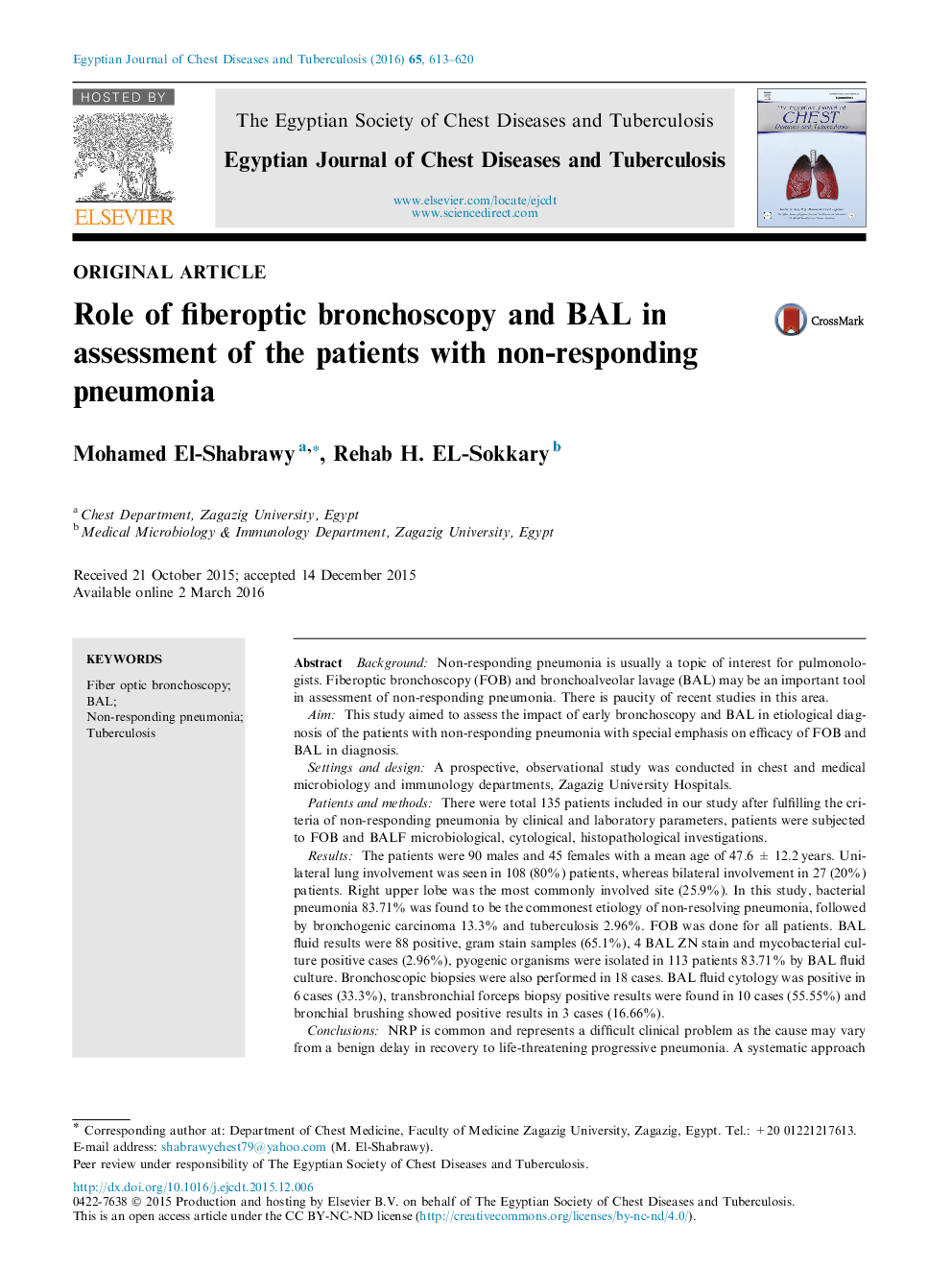| Article ID | Journal | Published Year | Pages | File Type |
|---|---|---|---|---|
| 3399822 | Egyptian Journal of Chest Diseases and Tuberculosis | 2016 | 8 Pages |
BackgroundNon-responding pneumonia is usually a topic of interest for pulmonologists. Fiberoptic bronchoscopy (FOB) and bronchoalveolar lavage (BAL) may be an important tool in assessment of non-responding pneumonia. There is paucity of recent studies in this area.AimThis study aimed to assess the impact of early bronchoscopy and BAL in etiological diagnosis of the patients with non-responding pneumonia with special emphasis on efficacy of FOB and BAL in diagnosis.Settings and designA prospective, observational study was conducted in chest and medical microbiology and immunology departments, Zagazig University Hospitals.Patients and methodsThere were total 135 patients included in our study after fulfilling the criteria of non-responding pneumonia by clinical and laboratory parameters, patients were subjected to FOB and BALF microbiological, cytological, histopathological investigations.ResultsThe patients were 90 males and 45 females with a mean age of 47.6 ± 12.2 years. Unilateral lung involvement was seen in 108 (80%) patients, whereas bilateral involvement in 27 (20%) patients. Right upper lobe was the most commonly involved site (25.9%). In this study, bacterial pneumonia 83.71% was found to be the commonest etiology of non-resolving pneumonia, followed by bronchogenic carcinoma 13.3% and tuberculosis 2.96%. FOB was done for all patients. BAL fluid results were 88 positive, gram stain samples (65.1%), 4 BAL ZN stain and mycobacterial culture positive cases (2.96%), pyogenic organisms were isolated in 113 patients 83.71% by BAL fluid culture. Bronchoscopic biopsies were also performed in 18 cases. BAL fluid cytology was positive in 6 cases (33.3%), transbronchial forceps biopsy positive results were found in 10 cases (55.55%) and bronchial brushing showed positive results in 3 cases (16.66%).ConclusionsNRP is common and represents a difficult clinical problem as the cause may vary from a benign delay in recovery to life-threatening progressive pneumonia. A systematic approach to investigation and management is recommended with consideration of both infectious and non-infectious causes.
